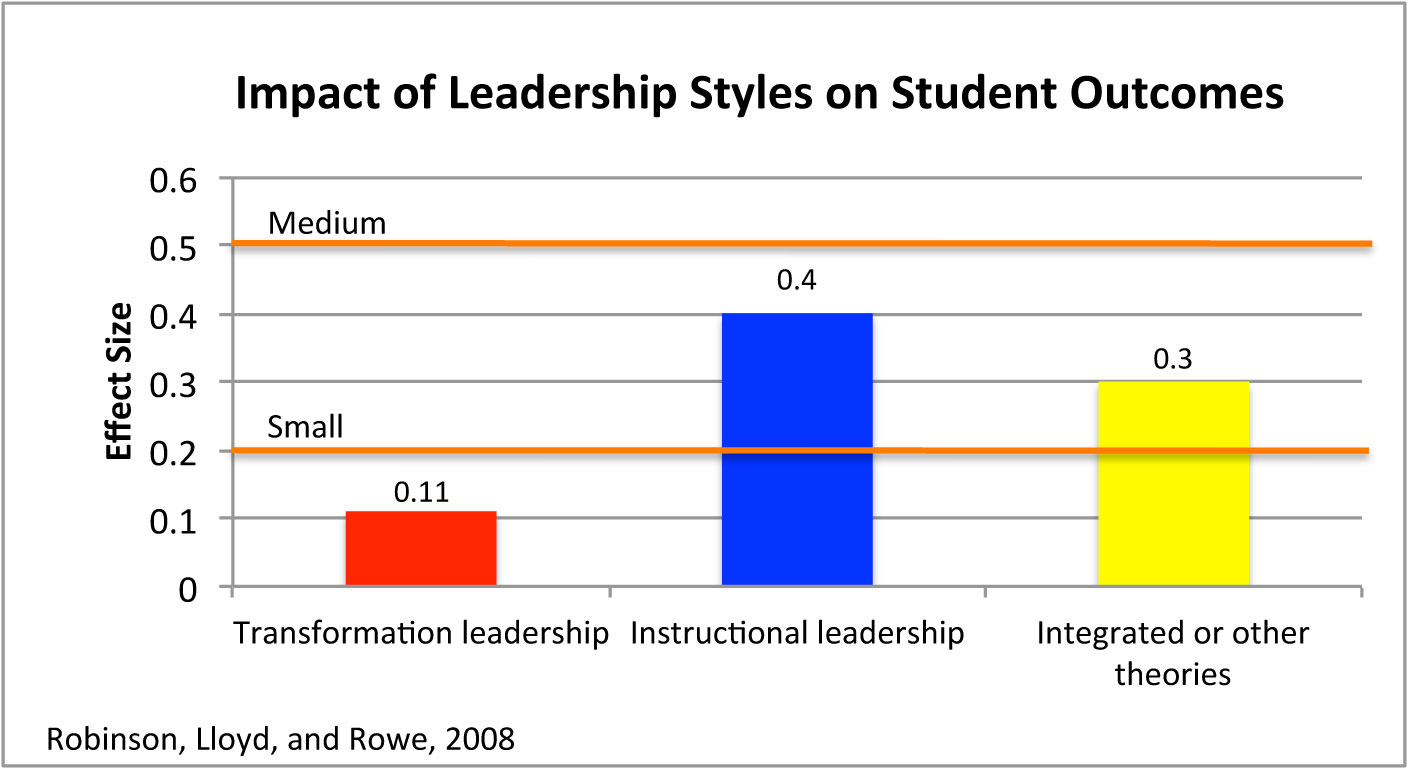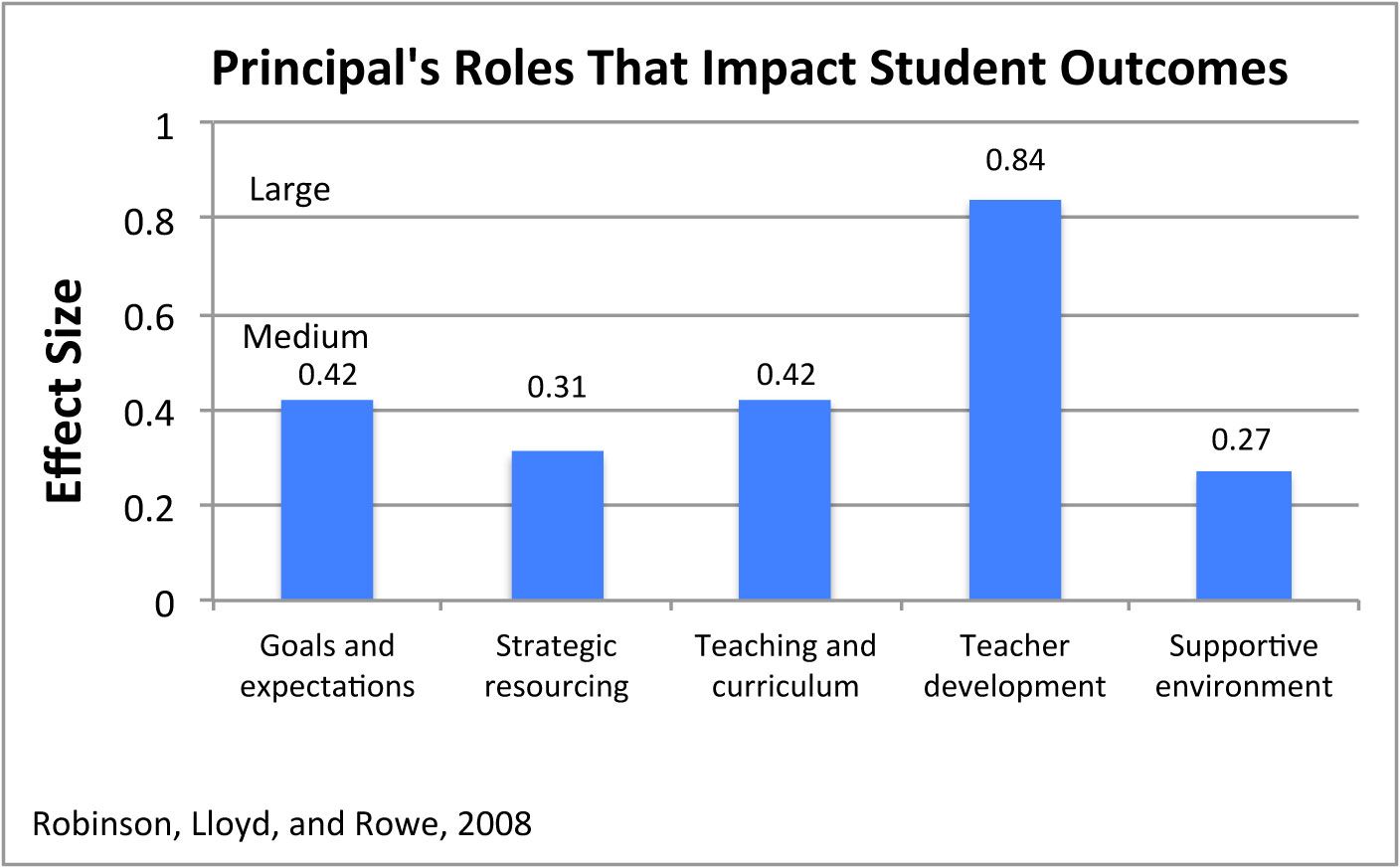What makes an effective principal?
Why is this question important? How best to build an education system that can meet the needs of students and society continues to be in the forefront of public debate. Failed interventions ranging from smaller class size to high-stakes testing have resulted in frustration and a growing sense of helplessness among many educators and the public. Fortunately, the past 30 years have provided policy makers and educators with a broad range of practices and curriculums that work, but the solution to the stagnant performance of our schools involves employing these practices over a 180-day school year. Sustainable implementation is essential but is overlooked as we are often distracted by easy fixes that promise little effort and great reward. The one lesson that educators in the field have learned is that effective implementation inevitably depends on the principal. This paper offers strong evidence that what many have felt was true has now been verified by solid research. For principals to improve student and school performance, they need to adopt an effective leadership style and be engaged in a set of activities to bring about the best results.
See further discussion below.


Source(s): The Impact of Leadership on Student Outcomes: An Analysis of the Differential Effects of Leadership Types
Result(s): The study examines the issue of how to turn out effective principals that can improve student performance by conducting two meta-analyses. The first meta-analysis indicated that the average effect of instructional leadership (a style emphasizing practices directly impacting teaching) of 0.4 on student outcomes was nearly four times that of transformational leadership (a style emphasizing change through providing staff with inspiration and vision), which had a 0.11 effect size. The integrated and other category accounted for a variety of other leadership styles, styles that were poorly defined, or instances in which transformational and instructional leadership styles were implemented together.
The second meta-analysis revealed strong effects for the leadership dimension or practice involving promoting and participating in teacher learning and development, and moderate effects for other leadership components. Five sets of leadership dimensions were derived from an analysis of the items used to measure school leadership in studies included in the meta-analysis: establishing goals and expectations; resourcing strategically; planning, coordinating, and evaluating teaching and the curriculum; promoting and participating in teacher learning and development; and ensuring an orderly and supportive environment.
Implication(s): The analysis examining transformational, instructional leadership, and the five leadership dimensions suggested the more that principals focused their relationships, their work, and training on the core issues of teaching and learning, the greater the impact on student outcomes. The paper concluded with a discussion of the need for leadership to be more closely connected to the accumulated evidence base on effective teaching and effective teacher learning. Given the increased pressures on principals and teachers to demonstrate significant improvements in student achievement scores, effective leadership training and implementation of these skills offer schools an important alternative to many of the practices that have not borne fruit.
Author(s): Viviane M. J. Robinson, Claire A. Lloyd, and Kenneth J. Rowe
Publisher(s): Lead + Learn Press
Study Description: The study included findings from 27 published studies of the relationship between leadership and student outcomes. The study conducted two meta-analyses. The first meta-analysis, including 22 of the 27 studies, compared the effects of transformational leadership, instructional leadership, and well as a category of mixed leadership styles on student outcomes. The second meta-analysis compared the effects of five sets of leadership practices on student outcomes in 12 of the studies.
Definition(s): Instructional leadership: A leadership approach in which the principal emphasizes practices that promote and support teaching and learning. In practice, this means that the principal builds a culture that encourages educational achievement by making instructional quality the top priority of the school.
Strategic resourcing: Securing resources that are aligned with instructional purposes rather than securing resources generally for a school.
Transformational leadership: A leadership approach in which the principal identifies the needed change, creates a vision to guide the change, provides motivation through inspiration, and executes the change with the commitment of the school’s staff.
Citation: Robinson, V. M. J., Lloyd, C. A., & Rowe, K. J. (2008). The impact of leadership on student outcomes: An analysis of the differential effects of leadership types. Educational Administration Quarterly, 44(5), 635–674. Originally published online September 23, 2008. Retrieved October 5, 2011, from http://eaq.sagepub.com/content/44/5/635.full.pdf
